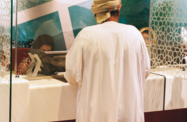Central Bank of Oman (CBO) statistics show an upswing in money supply among the nation’s banks in the first quarter of 2017, with total deposits to conventional banks rising by 4.2% to OR19.02bn ($49.4bn), compared to growth of 2% in quarter one 2016.

The increase was supported by a 6.9% quarter-on-quarter (q-o-q) rise in government deposits to commercial banks between January and March, as well as q-o-q expansion of 5.7% and 3% in public enterprise deposits and private sector deposits, respectively.
In a June report, ratings agency Moody’s said that 34% of banking system deposits were made by the government and related entities over the period, citing higher oil prices as behind improved state revenues and deposit growth.
These results also had a positive effect on profits, with three out of the six commercial banks listed on the Muscat Securities Market posting year-on-year (y-o-y) net profits over the period.
Bank Muscat’s net earnings grew by 1.1% to OR44.2m ($114.8m), Bank Sohar’s increased by 46.3% to OR6m ($15.6m) and HSBC’s rose by 62.9% to OR5.7m ($14.8m). Profits at National Bank of Oman remained stable at OR13m ($33.8m), while Bank Dhofar and Ahlibank’s bottom lines both dipped slightly.
Following the completion of an Article IV consultation with Oman in May, the IMF summarised its findings on the banking sector by stating, “The Omani banking system remains well capitalised, deposits have increased, liquidity conditions appear to have eased, and credit to the private sector continues to grow.”
Islamic banking matures
While the conventional banking sector had its best quarter for over a year, the strongest growth figures this year have come from the country’s nascent Islamic banking sector.
Although the first dedicated Islamic bank in Oman didn’t start operations until 2013, the past two years have seen the segment mature rapidly, with its market share moving from 5.1% in 2015 to 10.8% this year, according to the CBO. Statistics for February were also positive, showing the segment’s assets up more than 62% y-o-y to OR3.27bn ($8.5bn).
Last year the country’s two dedicated Islamic banks – Alizz Islamic Bank and Bank Nizwa – transitioned from a start-up to a growth phase, as they put early infrastructural and human resource costs behind them.
Bank Nizwa, Oman’s first dedicated Islamic bank, registered assets growth of 49% to OR516m ($1.3bn) last year, reaching net profitability for the first time since it became operational. Meanwhile, Alizz Islamic Bank’s assets rose by 51% to OR381.6m ($991.2m), though the bank is not expected to turn profitable until 2018, according to analysts at Ubhar Capital – an Omani-based investment and research firm.
Khalid Al Kayed, CEO of Bank Nizwa, told OBG that the sector’s recent strong growth has been aided by what he believes to be “probably the best-crafted regulatory framework for Islamic finance in the GCC”.
“Although there have been challenges at times – especially when aligning regulations with the standards of the Accounting and Auditing Organisation for Islamic Finance – the CBO has always been very flexible and proactive in responding to proposed solutions,” he said.
Ubhar Capital also expects Bank Nizwa and Alizz Islamic Bank to bring their cost-to-income ratio down to the sector average of around 40% in the medium term, from 91% and 141%, respectively. To achieve this, Bank Nizwa will need to register a compound annual growth rate (CAGR) of 10%, while Alizz Islamic Bank will require a CAGR of 14% between 2017 and 2021, according to Ubhar Capital.

Fitch largely affirms positive ratings
In validation of the positive figures emerging from the banking sector, Fitch mostly affirmed its positive ratings for Oman’s banks in June. Fitch cited the strength of government support for the country’s banks as a key reason for its rating, as well as a belief that Oman has largely maintained its financial flexibility despite the weakening effects of low oil prices.
Fitch’s view that the government is unlikely to harm the sector’s stability by withdrawing its deposits has also been echoed by stakeholders from within Oman’s banking sector. “Before the government draws from bank deposits, it will first draw from central bank reserves, cut expenses, and look to increase tax revenue, so it is unlikely that the government will draw from bank deposits,” Andrew Long, CEO of HSBC Oman, told OBG.
The Fitch rating was a positive boost for Oman’s investment status following Standard & Poor’s downgrading of Oman’s credit rating to junk in May, a decision which reflected “the potential for Oman’s income level to weaken and for its fiscal and external positions to deteriorate,” S&P said.
Commenting on S&P’s rating, Lo’ai Bataineh, CEO of Ubhar Capital told OBG, “Investors are aware of Oman’s challenges and have already priced them into their decisions. S&P’s downgrade does not change that.”



